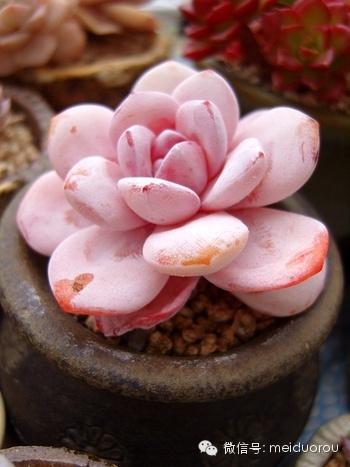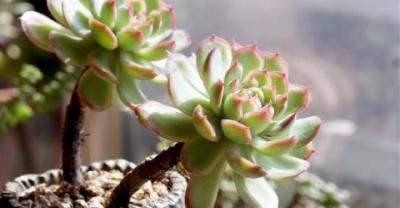How to manage the planting of succulent plants in May
First of all, I beg you to go to the official store below to take care of the bubble business! Thank you very much. Forgive me for having too few things, but I can make sure that everything is hand-picked by Bubble.
In late spring and early summer, May is very suitable for the growth of succulent plants, with suitable temperature, large temperature difference between day and night and long sunshine time. It is the peak growing season for succulent plants, especially represented by "summer type" succulent plants, such as Longwangqiu, Jinlong, Meihuajiao and many other species of cactus. The "intermediate" succulent plants of crassulaceae, such as stone lotus, black mage, simple leaf flower moon, sunset geese, lying cattle and dinosaurs of aloe family, and some species of longevity, also grew vigorously during this period. On the other hand, the stone flowers, light bulbs, spring peach jade and Anzhen of the apricot family, Xindongni, moonlight, snow lotus and Dongyun of the crassulaceae, and the "winter-type" succulent plants of the hyacinth family, such as root longevity, celery, spring grass, broad-leaf spring grass, and so on, grow slowly due to the increase in temperature, and even stop growing in the southern regions with higher temperatures. Therefore, the management of succulent plants should be carried out according to different species this month.

The light of planting and management of succulent plants in May:
The "summer type" succulent plants such as Huishan, nail crab, Raytheon of the tequila family, "summer type" succulent plants of the cactus family, and "sunset geese, fire offerings" of the family Jingjiao can be maintained in a sunny place outside. this can make the plants strong and beautiful in color. If the light is not enough, it is easy to make the plant grow too long, the plant type is loose, and even some succulent plants with red and yellow markings on the leaves become dim or even disappear. Varieties with powdered stems or leaves such as Longshen wood had better be cultivated indoors all the year round, otherwise the white powder will fall off due to the wind and rain, affecting the ornamental. The "intermediate" varieties of the aloe family, such as jade dew, winter constellation, and Ruihe, can be properly shaded to avoid strong sunlight to burn leaves and affect growth, but they should not be too shaded, lest the plant type is loose and the leaves are brittle and easy to break due to lack of light; "winter type species" such as raw stone flower, Vientiane, jade fan and snow lotus can be maintained in bright light without direct sunlight. Plants placed indoors should be well ventilated so as not to spoil the beloved "meat" by the muggy air. Outdoor cultivation should avoid long-term rain, otherwise it is easy to basin soil water to cause rotten roots.

Watering for planting management of succulent plants in May:
For the varieties that are in the growing period, the soil should be kept moist, such as long-term drought and lack of water in the basin soil, although the plant will not die, but the growth level is slow, or even stop growing, the leaves are shrunken, no luster, seriously affecting the ornamental. Be sure to water thoroughly, preferably until the water flows out from the drain at the bottom of the flowerpot, which can wash out the salt in the soil and prevent it from adhering to the root system and affecting the growth of the plant. At the same time, it is necessary to avoid stagnant water in the basin soil so as not to cause rotten roots. As for the "winter-type" succulent plants that are about to go dormant, such as stone flower, imperial jade, snow lotus, Dongyun, Vientiane, jade fan and so on, although the plant growth has not completely stopped, it is very slow, and the water needed is not much, so it is necessary to properly control watering and keep the basin soil semi-dry. The 12-volume genus of aloe vera and some species of cactus have certain requirements for air humidity. Spray water on the plants during the climate to increase the air humidity and make them richer in color.

Fertilization for planting and management of succulent plants in May:
Growing "summer-type" succulent plants can be fertilized according to different varieties, while dormant "winter-type species" should stop fertilizing. Even the same type of succulent plants should be fertilized or not according to different varieties and individual basis. In short, fast-growing plants should apply more fertilizer, while slow-growing plants should apply less or no fertilizer.
Disease control in planting and management of succulent plants in May:
The climate is favorable this month, and pests are also beginning to be active.
This month, the "summer type" succulent plants can continue to change pots, and split landscape planting, cutting, grafting, sowing and propagation. Some flowering cactus plants can also be artificially pollinated and bred.
- Prev

Monthly calendar for planting and management of succulent plants: June
June, with a warm and sunny climate, is the peak season for the growth of "summer-type" succulent plants, and most species, especially cacti, bloom this month. And...
- Next

Farmers grow towel gourd, they should know the main varieties of towel gourd.
1 fat head towel gourd, also known as Hechuan towel gourd. Mid-late ripening, oblong fruit, green peel, striped, dense white short hairs and deep horizontal frown. Melon.
Related
- Fuxing push coffee new agricultural production and marketing class: lack of small-scale processing plants
- Jujube rice field leisure farm deep ploughing Yilan for five years to create a space for organic food and play
- Nongyu Farm-A trial of organic papaya for brave women with advanced technology
- Four points for attention in the prevention and control of diseases and insect pests of edible fungi
- How to add nutrient solution to Edible Fungi
- Is there any good way to control edible fungus mites?
- Open Inoculation Technology of Edible Fungi
- Is there any clever way to use fertilizer for edible fungus in winter?
- What agents are used to kill the pathogens of edible fungi in the mushroom shed?
- Rapid drying of Edible Fungi

